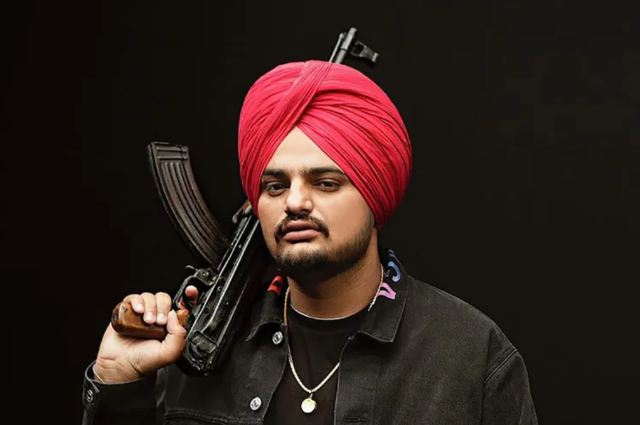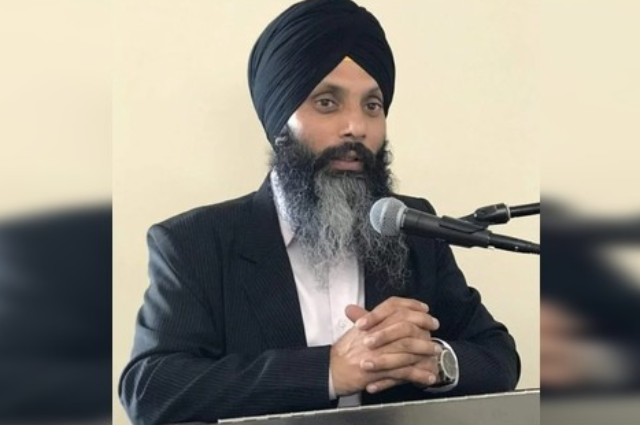
Image by PublicDomainPictures from Pixabay
In the Indian state of Punjab, the influence of gangsters is unmistakable. From small-town criminals who deal in illegal liquor and demand money from local businesses then they decide to turn into powerful crime bosses who control firearms and narcotics. This results in even extending their reach into Punjab’s thriving film and music industries. Among these figures, one man’s name stands out.
Lawrence Bishnoi: The Most Feared Crime Boss

Image by Stephane from Pixabay
Lawrence Bishnoi belongs to a small Punjab village and has risen to India’s most feared gangster. Though he has been imprisoned for nearly a decade but Bishnoi’s influence has only expanded, evolving from modest criminal activities on a university campus to a vast national and even international crime network. In recent years, this network has been linked to several high-profile killings in India and this has led to establishing Bishnoi's reputation and reach.
Bishnoi Gang’s Global Expansion and Canada Accusations
The global footprint of Bishnoi’s gang became very well known. During a high-profile press conference in Canada, senior Canadian police officials made serious allegations involving Indian diplomats. They accused these diplomats of rewriting criminal activities within Canada by particularly targeting Canadian Sikhs connected to a separatist movement. Among the alleged targets was Hardeep Singh Nijjar, a prominent Sikh activist who was fatally shot outside a gurdwara.
Canadian Police Assistant Commissioner Brigitte Gauvin claimed that Indian diplomats were using “organized crime elements” to carry out attacks on Canadian soil, specifically naming the Bishnoi gang as a suspected co-conspirator of Indian government agents.
Bishnoi’s Rising Influence in Canada’s Punjabi Community
After Nijjar’s murder in 2023, the Bishnoi gang began to publicly assert its presence in Canada where there is a large Punjabi immigrant community. The gang claimed responsibility for the shooting of Sukhdool Singh, a gangster in Winnipeg. However, the statements from Canadian police were the first formal accusations that were connecting Bishnoi’s gang to alleged actions co-ordinated by Indian government entities. “Lawrence Bishnoi now has a truly global gang behind him,” noted Ritesh Lakhi, an independent journalist who has extensively covered gangs in both Punjab and Canada. According to Lakhi, Bishnoi’s network extends not only to North America that is particularly in the U.S. and Canada, but also reaches into Europe, the Gulf, and many other regions.
Lawrence Bishnoi’s Early Life: Did He Take a Different Path?
Interestingly, Bishnoi’s background is totally opposite from a typical life of crime. He was born into a respected family where his father was a former police officer and his family owned a 100 acres of land that led to affording them a great amount of wealth. His mother with high hopes for her son’s future had named him after a British army officer and ensured he received the best education and clothing she could provide.
Lawrence Bishnoi’s journey from a small village in Punjab to leading a global criminal network illustrates a complex intersection of personal choice, socio-political conditions, and his plans. His organization’s alleged involvement in Canada emphasizes the expanding scope and reach of Punjab’s criminal activity and raises questions about the broader implications of such cross-border affiliations.
The Rebirth of Gang Violence in Bollywood: A Troubling Trend
As fear grips the Bollywood industry following the murder of Baba Siddique, it seems that the power left by the declining Mumbai mafias of 1990s era is being filled by gangsters from other regions. This shift poses serious concerns for both the film community and Mumbai itself, a city that has enjoyed a sense of security over the past two decades. Many residents had come to view their encounters with the mafia as normal traditional stories, but recent events suggest that some uninvited problems are making their return into a reality.
The Legacy of Baba Siddique and Emerging Gangsters
He was a personality from the past but he set a precedent that current gangsters like Lawrence Bishnoi can be aggressive. The mention of the blackbuck incident serves as a distraction from the more pressing issue at hand which is the chances of revival of targeted killings across Mumbai and beyond. This new wave of assassination attempts now appears to carry communal violence which is alarming for any industry that has historically remained unbiased regarding religion. The introduction of ideological motives into violent acts aims to legitimize chaos and rally broader support that is reflective of Chhota Rajan’s earlier attempts to provide reasoning of patriotism with crime.
The Mafia's Code and Changing Dynamics
Historically, the Mumbai mafia was involved in contract killings often arranged on behalf of politicians and business leaders. However, these acts were not in commonplaces and the gangs operated under their own set of rules. Loyalty was at the top of these recruitments and they typically avoided hiring inexperienced young men for violent tasks.
The notable exception was Abu Salem, who employed young men from his hometown of Azamgarh and other parts of Uttar Pradesh for as little as ₹5,000. His approach briefly altered the dynamics within the Mumbai underworld. The young recruits were aware that there was no safety net—if they were caught or killed during their assignments neither they nor their families would receive any support from the gang. This transactional relationship meant that they undertook these dangerous jobs purely for monetary gain.
The Current Landscape of Violence
The assassination of T-Series founder Gulshan Kumar demonstrates how personal vendettas can assassinate someone with organized crime. Abu Salem arranged Kumar's murder on behalf of influential figures in the music industry, highlighting a troubling trend where current gangsters from Delhi and northern India operate primarily as extortionists and hired killers. Their connections to corrupt law enforcement officials and desperate politicians make them particularly threatening. These gangsters often take credit for high-profile murders without providing credible motives similar to the case of Sidhu Moosewala.
The methods employed by these new criminals are concerning as they often recruit random individuals with no prior history of violence as shooters. This lack of connection makes it difficult for law enforcement agencies to solve these cases effectively. Historical precedents show that even when killers are apprehended, the masterminds behind such crimes frequently evade justice.
A Dark Chapter in Bollywood's History
The 1990s witnessed a series of violent incidents involving notable figures in Bollywood and beyond. Alongside Gulshan Kumar’s murder were other high-profile killings including producer Mukesh Duggal and builders Natwarlal Desai and Dilip Valecha. During this active period where gangsters like Ali Budesh had emerged that was claiming responsibility for various attacks to instill fear within the industry. Budesh’s tactics included demanding film rights from producers under threat of violence by showcasing how extortion became rampant. By 1998, extortion calls had escalated to such an extent that even restaurant owners were targeted. The tragic shooting of Keith Rodrigues at Copper Chimney restaurant was linked to unpaid extortion demands from Budesh, who operated from abroad while evading law enforcement.
The Evolution of Gangsters
Many notorious gangsters from previous decades emerged during economically challenging times when opportunities were limited. They formed tight-knot groups that functioned almost like families while they did not shy away from violence and their actions were typically calculated rather unplanned.
In contrast, today’s gangsters often find themselves formed by prison environments and operate more like puppets than true leaders. In an era dominated by digital surveillance and increased scrutiny from law enforcement agencies, it is very strange that unresolved murder cases continue to spread violence in society while these imprisoned criminals hide behind distractions such as the blackbuck incident. As Bollywood struggles with this rebirth of violence and fear, it remains crucial for both industry insiders and law enforcement to address these issues promptly before they turn further out of control.
NIA's Ongoing Crackdown: Rs 10 Lakh Reward for Information on Anmol Bishnoi
The National Investigation Agency (NIA) is continuing its rigorous actions against organized crime and terrorist networks. As part of this mission, the NIA has announced a reward of Rs 10 lakh for anyone who can provide information leading to the arrest of Anmol Bishnoi, the brother of jailed gangster Lawrence Bishnoi. Anmol has been implicated in two official charge sheets connected to a 2022 case filed under the Unlawful Activities (Prevention) Act (UAPA).
Anmol Bishnoi has recently come under increased scrutiny due to his alleged connections to criminal activities linked to a political party in Mumbai. He is also wanted in relation to a shooting incident that occurred outside Bollywood star Salman Khan’s residence earlier this year. Investigators believe that his capture could help reveal key details about a larger network of criminals and terrorists operating across India.
NIA’s Appeal for Public Assistance

Image by Gerd Altmann from Pixabay
In a bid to strengthen their case, NIA officials have announced the reward by encouraging the public to assist by providing them with information about Anmol’s location. Officials hope that his arrest will help unveil more about the complex "Gangster-Terror" networks believed to be involved in various illegal activities including the smuggling of weapons and explosives across borders, bomb attacks, targeted assassinations, extortion and funding of terrorist groups.
Recent Multi-State Crackdown by NIA
This recent move comes after nearly nine months of intense efforts by the NIA, during which they seized a large supply of illegal arms, ammunition, digital devices, cash and some crucial documents in a widespread raid. This multi-state crackdown targeted three cases tied to conspiracies involving the banned group Babbar Khalsa International (BKI) and the Lawrence Bishnoi Crime Syndicate. In January, NIA teams conducted co-ordinated raids across 32 locations in Punjab, Haryana, Rajasthan, Uttar Pradesh, Delhi, and Chandigarh to pull apart these networks.
Scope of Terrorist and Gangster Networks in India
The January raids exposed connections between banned terrorist organizations and criminal syndicates involved in the smuggling and trafficking of arms, ammunition, and explosive devices across borders. These dangerous networks use the smuggled items to execute violent acts, including bombings, high-profile murders, and extortion schemes that often target prominent figures and communities. High-profile cases linked to these syndicates include the killing of famous Punjabi singer Sidhu Moosewala and religious leader Pardeep Kumar along with widespread extortion from business and professional circles.
The NIA’s efforts emphasize its commitment to disrupting criminal and terrorist networks that threaten public safety and national security. By offering a reward for Anmol Bishnoi's capture, the agency hopes to gain crucial insights that could ultimately lead to the identification of this larger network of organized crime and terrorism within India.
The Rise of Lawrence Bishnoi: Early Beginnings
Lawrence Bishnoi was born in 1993 near India’s border with Pakistan in Punjab, a Sikh-majority region. According to his mother, Sunita—a college graduate turned homemaker Bishnoi stood out even as a child with a complexion so fair it appeared pinkish by giving him an appearance often seen as more European than Indian. This distinctive look led to an equally distinctive name. His parents chose "Lawrence," inspired by the British administrator Henry Lawrence who once had served in colonial Punjab. The name was unusual within the Bishnoi community of northern India that was adding to his unique identity early on.
Roots in Privilege and Education
Bishnoi’s family was wealthy that was owned more than 100 acres of farmland in Punjab's Duttaranwali village. Despite his rural roots, his upbringing was marked by privilege and opportunity. After completing high school then he moved to Chandigarh, Punjab's capital, to pursue a law degree at DAV College. It was here, in the middle of the student politics where his life took a dramatic turn.
Transition to Student Politics and Criminal Influence
At DAV College, Bishnoi became deeply involved in student politics where he eventually had risen to lead the college’s student body. However, his leadership position did not come without controversy. He clashed with rival student groups and these altercations allegedly pulled him into criminal activities. Bishnoi faced charges of burning and attempted murder that resulted in his first jail term in Chandigarh. During this time, he encountered other imprisoned gangsters who would go on to influence his future path.
Bishnoi’s story is not unique in Punjab, where many young men from prosperous families often develop what local observers call the "I’m something" syndrome. According to Singh, an author and long-time observer of Bishnoi’s journey where young men from privileged rural backgrounds frequently face a reality check when they move to urban centres. Surrounded by an elite, intellectually driven crowd where they realize they are no longer seen as influential landowners. For some, crime becomes a way to reassert a sense of power and identity.
Despite his criminal background, Bishnoi has earned a reputation among young followers as a "man of principle." A senior police officer in Rajasthan described Bishnoi as someone who positions himself as morally righteous by even portraying himself as a celebrity. This image is reinforced by his frequent sign-offs with the Hindu slogan "Jai Shri Ram" (Hail Lord Ram), which has become a gathering call for right-wing supporters in India. Bishnoi’s appeal extends beyond Punjab by attracting followers and gang members across the states of Rajasthan, and Uttar Pradesh, even reaching Canada and the United States.
A Decade of Crime and a Growing Syndicate
Though Bishnoi has spent much of the last decade in and out of prison where he has continued to expand his criminal organisation. His influence now stretches to New Delhi, the national capital and surrounding states. Turf wars with rival gangs in Rajasthan, Punjab and Uttar Pradesh have only strengthened his reputation in the underworld. Recently, reports suggest that he may even be eyeing a position in Mumbai’s infamous criminal landscape.
Bishnoi’s Rise to Notoriety: From Sidhu Moose Wala to Baba Siddique
Bishnoi first became a household name in India when he was linked to the killing of Sidhu Moose Wala, a popular Punjabi rapper and politician, in May 2022. The murder, allegedly carried out by Bishnoi’s associates was part of a hostile intergang rivalry. This high-profile crime drew national attention by marking Bishnoi as a major player in India’s underworld.
Recently, his gang claimed responsibility for another shocking crime: the killing of Baba Siddique, a well-known Muslim politician and former minister in Maharashtra’s government. Siddique, who was closely connected to Bollywood’s elite and was killed in Mumbai’s upscale Bandra area. Bishnoi’s associates reportedly warned others who support actor Salman Khan to "keep your accounts in order," hinting at a larger vendetta against the Bollywood superstar. If these connections are genuine, Bishnoi’s criminal network could gain legitimacy and potentially attract even more followers from among India’s youth. As it can be noted that this influence risks spreading further among young people who increasingly look up to him by seeing him as a symbol of rebellious strength and a source of inspiration, despite his violent path.
Lawrence Bishnoi’s story from his beginnings in rural Punjab to his potential expansion into Mumbai’s underworld, exemplifies the complex relationship between crime, identity, and power. His "I’m something" mentality that was shared by others from similar backgrounds reflects a growing phenomenon where crime is seen as a pathway to regain status and respect. However, as Bishnoi’s influence grows, especially among impressionable youth where it also raises deeper questions about the appeal of criminality in modern Indian society and the broader implications of his rising fame.
The Growing Tensions Between India and Canada: A New Chapter in Diplomatic Strain
The ongoing tensions between India and Canada have recently intensified, largely revolving around the character of Lawrence Bishnoi. This situation escalated dramatically when both nations exchanged sharp accusations that was leading to the recall of senior diplomats from their respective posts. The roots of this conflict can be traced back to the murder of Sikh separatist Hardeep Singh Nijjar in Canada in 2023.
Initially, Nijjar's murder was perceived as part of a gang rivalry. However, Canadian authorities later alleged that Indian intelligence agencies had arranged the assassination by claiming that the Lawrence Bishnoi gang was contracted for the job. This shift in narrative has added complexity to an already tense situation.
Regardless of one's perspective on the circumstances surrounding Nijjar's death, it is clear that Prime Minister Justin Trudeau has leveraged this incident to gain favour with Khalistani extremists in Canada, a group whose support is crucial for his political survival. India has consistently raised concerns about Canada's role as a safe haven for Khalistani activists by highlighting threats against Indian diplomats and the exportation of anti-India sentiments back to Punjab.
Thus, while one should approach the Canadian account with uncertainty, it is peculiar that Bishnoi's name keeps resurfacing in connection with this murder. Canadian officials are expected to present witness testimonies soon which may shed further light on the matter.
What stands out in this saga is how Lawrence Bishnoi has seemingly transformed into a modern-day equivalent of notorious gangster Dawood Ibrahim, all while imprisoned in India. Arrested in 2014 at the age of 22, Bishnoi's rise to international expansion by the age of 32 raises eyebrows. According to Indian authorities, he has managed to establish a network comprising around 700 shooters and set up branches of his gang across various countries—all while serving time in prison.
Bishnoi's motivations remain unclear and somewhat confusing. The prevailing narrative suggests that he harbours a deep-seated grudge against Bollywood actor Salman Khan due to an incident where Khan was accused of killing a blackbuck, an animal sacred to the Bishnoi community. Following an assassination attempt on Khan several months ago, reports indicated that Bishnoi was behind it. Furthermore, after the murder of Siddique—who was friends with Khan—Bishnoi was again implicated as seeking revenge for the blackbuck incident.
It is worth noting that Bishnoi was only five years old when Salman Khan faced accusations related to the blackbuck. This raises questions about whether this early experience is truly shaped by his criminal path or if this narrative is merely a fabrication. The relating stories of Lawrence Bishnoi and the diplomatic rift between India and Canada reveal a complex web of crime, politics, and international relations that continues to unfold.
. . .
References:


